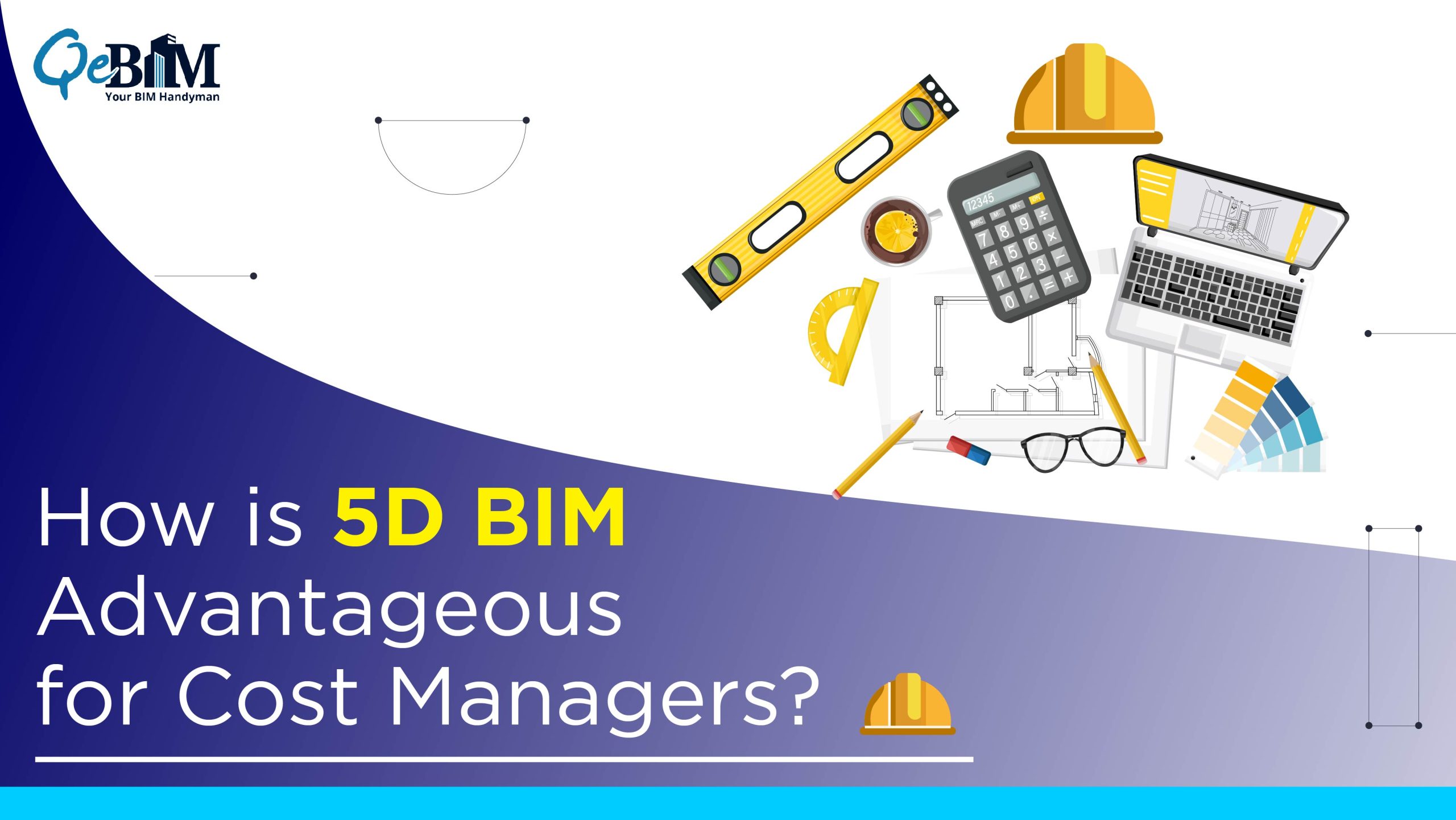How is 5D BIM Advantageous for Cost Managers?

The construction industry is changing drastically with the introduction of more and more modern construction projects that are large and complex. With increasing demand and the growing complexity of the projects, architects and engineers are finding it challenging to cope. Here is where BIM comes to the rescue for AEC professionals and is gaining momentum in the industry.
BIM, or Building Information Modeling, is a simple process of using an information-rich model to design, operate and deliver construction projects. BIM is transforming the way AEC professionals work positively. Every building sector in the AEC industry benefits from BIM in one way or another. For design, it helps map the accurate information to detect and resolve the clashes well in advance; for construction, it helps in appropriate resource management and waste reduction, and so on.
BIM’s significant benefits are streamlining the construction workflow, managing the costs to stick to the stipulated budget, and crucial decision-making. Every advantage BIM holds in the industry is linked to its dimension, i.e., BIM Dimensions. Today, we are sighting 5D BIM and how its application can help cost managers with estimation and budgeting.
5D BIM and its Significance
5D BIM is to integrate the cost factor into a model element. It enables the Cost Manager, and the team involved to analyze, evaluate and calculate the cost incurred over the building project’s lifecycle. This is useful in projects where estimations and budgeting are required prior to the construction phase. 5D BIM Services deals with forecasting the monetary elements concerning the projects. It allows cost managers to append the cost information to the 3D BIM model to produce estimates rapidly. The forecast, like the capital cost of purchasing and assembling a component, and its operating and maintenance costs are thoroughly calculated and linked. This eases out the work of the cost managers in evaluating the resources and applying the respective rates to it to get the overall project spend over its course beforehand. It also allows them to make changes in perspective to costings and budget in real-time as and when any design changes are incurred. 5D BIM has made it easy for cost managers to prepare accurate cost reports and real-time budget analyses at a much more influential stage. In addition, there are many benefits 5D BIM has to offer to Cost Managers. Let’s have a quick look.
Benefits of 5D BIM for Cost Managers
1) Rapid and Accurate Costings:
With the automated quantity take-off feature of 5D BIM, cost managers can quickly determine precise and accurate cost estimates. According to research by Azhar et al., BIM reduces 80% of the cost calculation time. It makes quantification way easier and faster for them. It allows them to closely monitor the activities and changes in design and construction and ensure no budget overshoot. 5D BIM proffers Cost Managers with greater control over project costs.
2) Calculative Decision Making:
5D BIM aids critical project decision-making with transparency among team members. Since all the iterations are well aware by the team and clashes can be encountered and resolved, crucial decision-making concerning resources and costs becomes easier for everyone involved. It also helps make informed decisions regarding material procurement and other construction activities.
3) Quick and Easy Quantity Take-offs:
5D BIM quickens the material take-off process by incorporating an automated model component list from the library. Accurate cost estimations can be determined automatically with the attached cost information relevant to the materials and objects. This speeds up the overall workflow and improves the team’s efficiency.
4) Integrating Real-Time Changes:
5D BIM lets the cost manager view the design changes in real-time and update the relevant cost concerning data hand to hand. Integrating the cost-relevant changes helps the managers to analyze the overall costings and make desired suggestions to stick to the allocated budget.
5) Improved Collaboration:
BIM Services allows the team to work on a single model regardless of location. This improves the communication and collaboration among the team, benefiting the cost managers to work simultaneously with the designer on modifications and alterations. With access to review and update at the same time, the work of cost managers becomes more accessible and faster. With the augmented collaboration, the whole team is on board regarding critical decisions concerning designs and budgets.
These were the plus points of 5D BIM for cost managers; it also holds benefits overall to the construction projects as below.
Additional benefits of 5D BIM
- Positive and Improved ROI
- Shorter project cycles
- Reduced errors
- Improved knowledge of project scope
- Real-time data access and information extraction
- Budget and cost breakdowns at all stages of the project lifecycle
Concluding
Embracing 5D BIM makes cost managers a key beneficiary in the BIM landscape. It saves their time with automation and gives them better control over the project costs. It showcases the real-time changes relevant to material, layout, and design and their impact on the project estimates and budget. 5D BIM holds a power-packed effect on the cost managers and the whole construction team.